Paid Social Manager Andrea Manouchou explains what you need to know about Meta’s Advantage+ Shopping Campaigns (ASC) and breaks down some common myths about this piece of tech.
The paid social landscape is changing fast, but there’s one thing that remains constant: Meta’s dominance within it.
With the highest projected ad revenue in social media companies and only second highest after Google in internet companies according to Statista’s forecasts of 2023-2027, it’s no surprise that Meta would try to leverage AI and machine learning to further improve its offering.
Hence in the summer of 2022, Meta launched the Advantage+ Shopping Campaign (ASC). a campaign type which uses machine learning to find the highest-value customers on Meta platforms.
As with many new technologies, though, the internet was soon awash with the klaxons of AI doom, with many social media professionals claiming ASC had some major drawbacks. But not every warning is founded in reality.
In this week’s blog, I’ll explain what you need to know about ASC before interrogating three of the most common myths I’ve seen crop up about this promising new tech.
Advantage+ Shopping Campaigns (ASC) uses machine learning to deliver better performance for your social ads versus manual sales campaigns. Meta claims that you can get an average lower cost per acquisition of 17% whilst also increasing efficiencies.
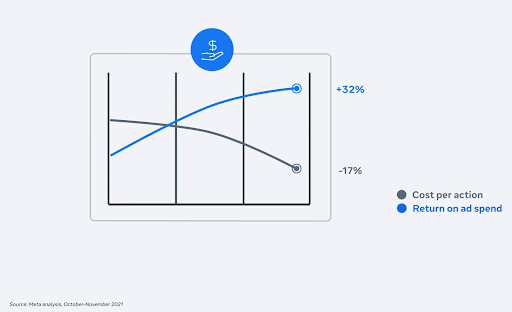
Source: Facebook
If true, it’s a no-brainer. But does it actually work?
Well, yes, actually. In fact, for an eCommerce client of ours, we saw 40% more efficient cost-per-clicks, 26% lower CPMs and a 38% stronger Meta ROAS when compared to the Dynamic Prospecting campaign running in the account.
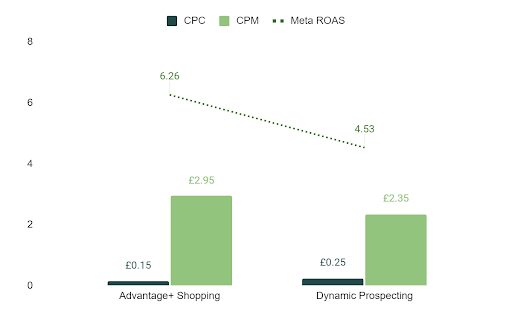
Results from an ASC campaign we ran on one of our eCommerce clients
Meta has since introduced more features in its Advantage+ offering, including Advantage+ audience and Advantage+ creative options. It’s promised more updates are coming this year to take further advantage of AI tools.
It is paramount, then, for advertisers to keep moving with the flow in order to stay ahead of the curve.
But with numbers that sound too good to be true, it’s only natural that some myths have emerged surrounding ASC. Here are the three I’ve seen cited the most often — and a quick reality check for each one.
By default, ASC has a more streamlined campaign setup compared to a manual sales campaign. With fewer inputs, it can then automate to maximise efficiencies and show the most relevant ads to the most relevant audiences.
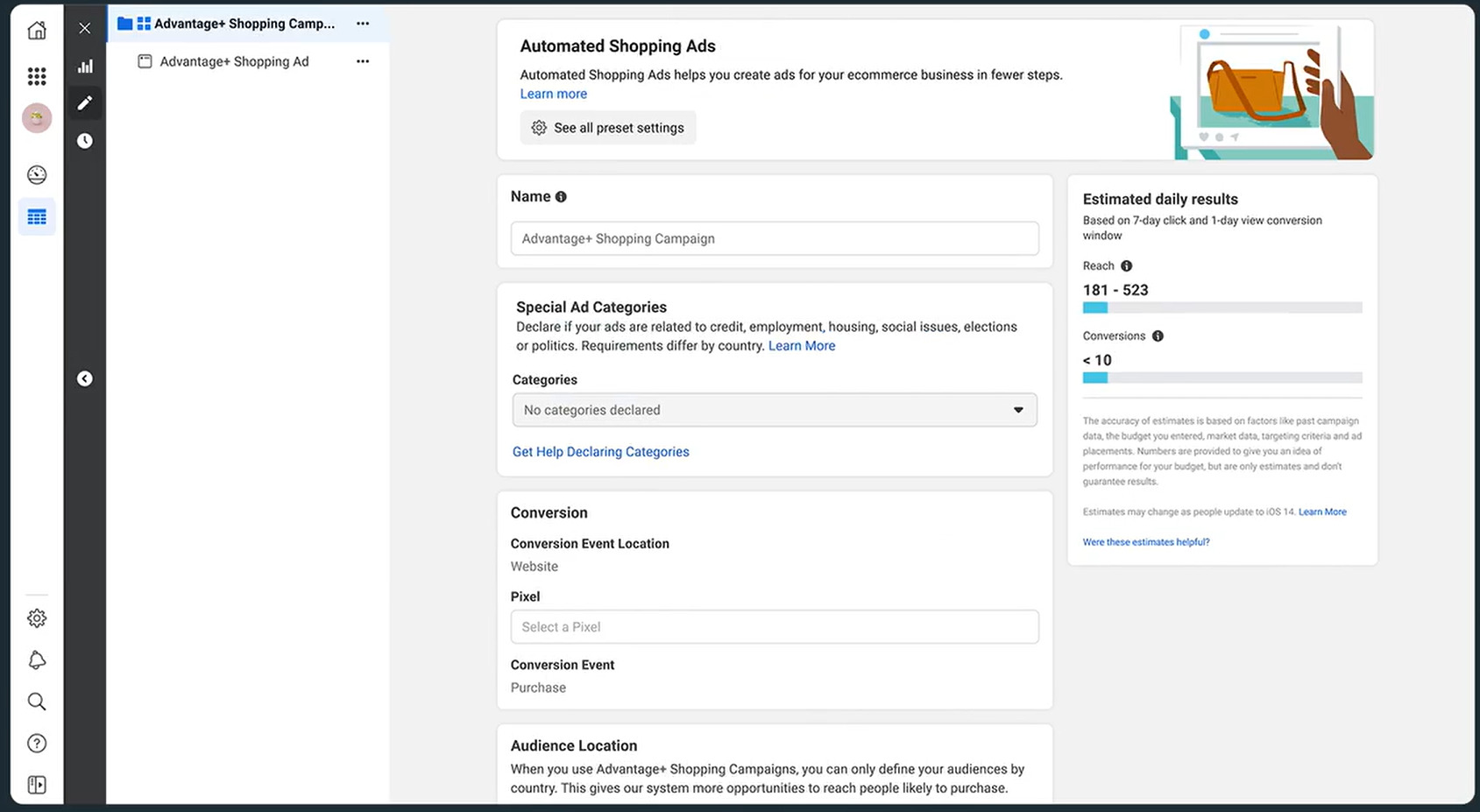
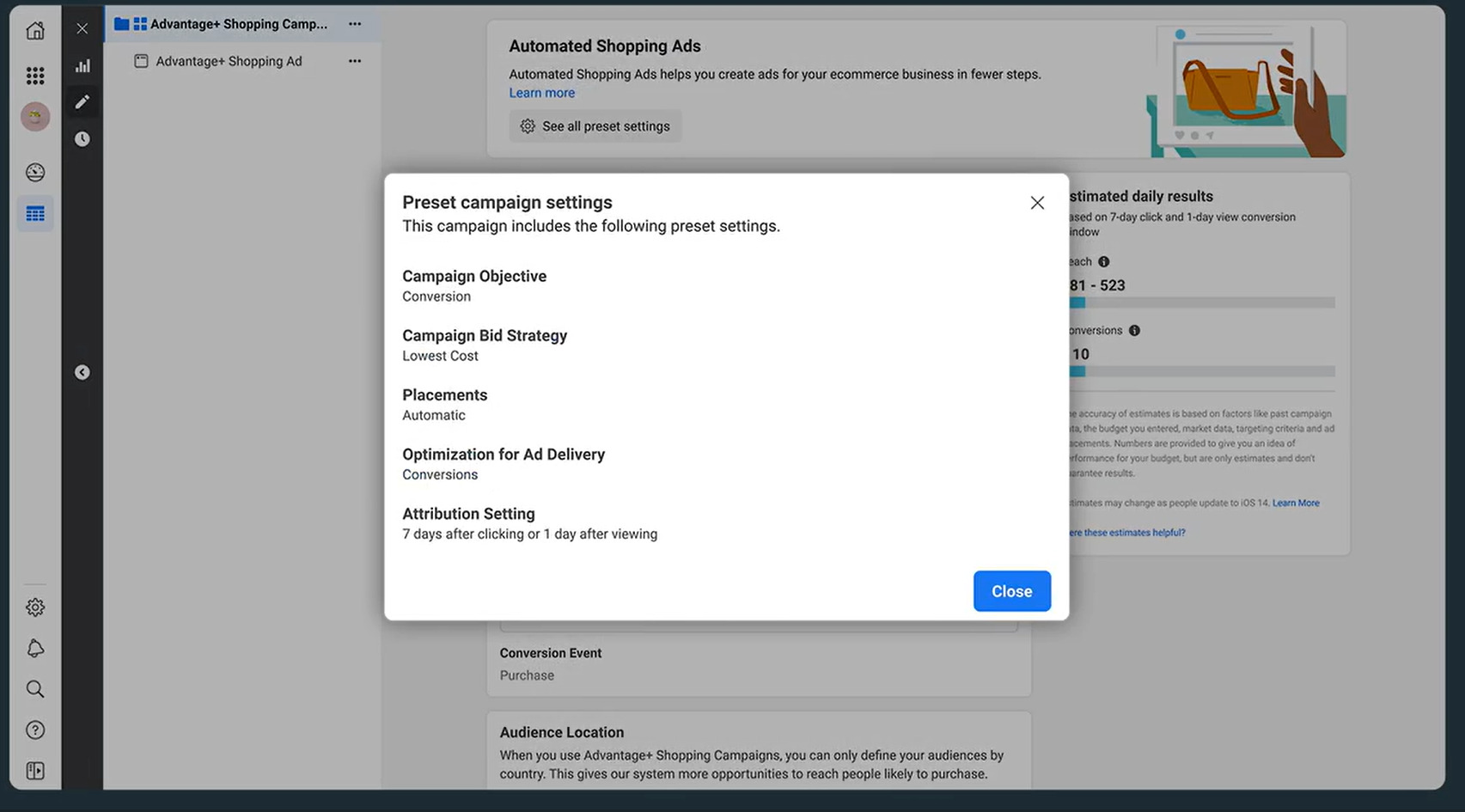
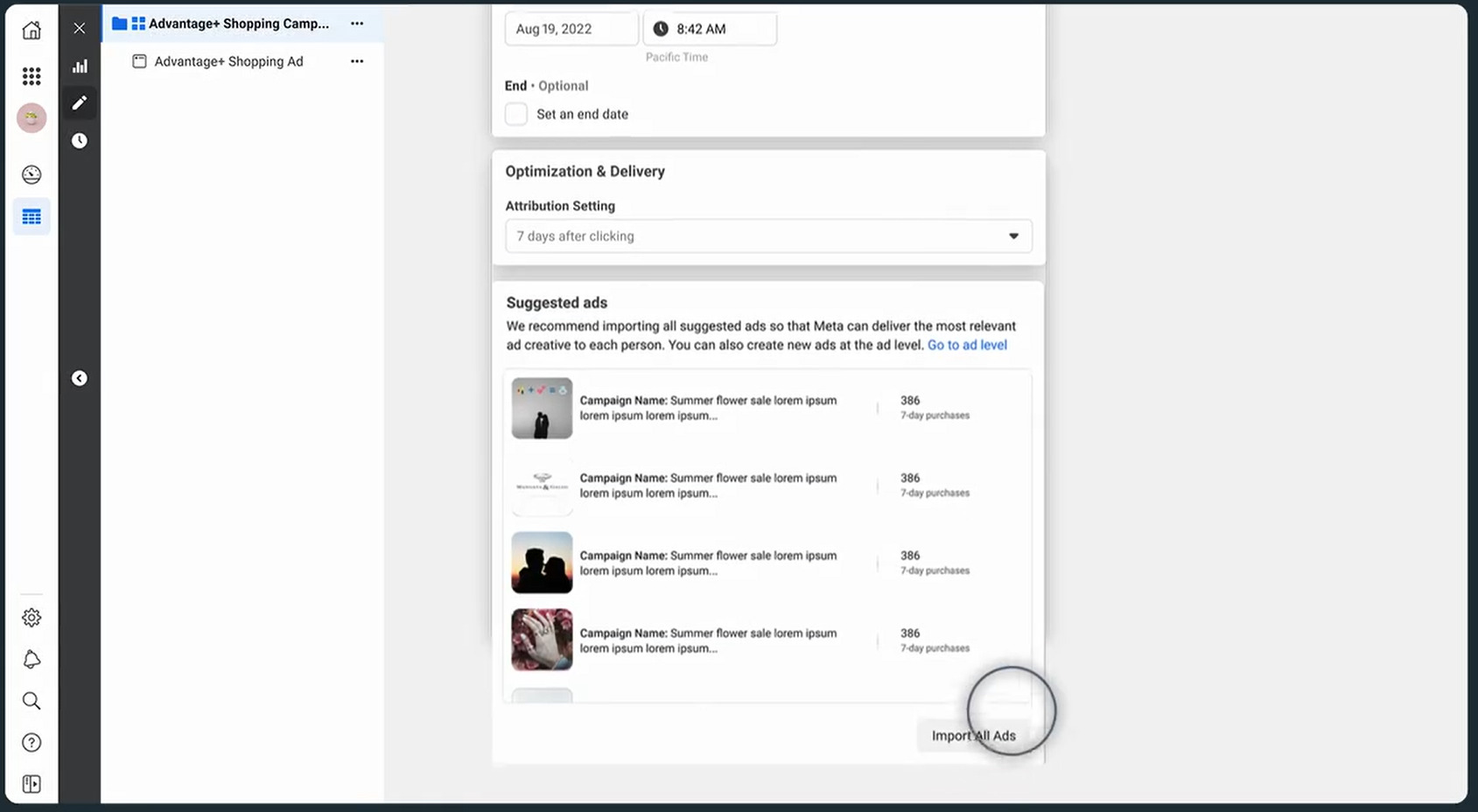
Now, this does mean that audience targeting is pretty broad when it comes to age and gender. And, yes, there are no options for interest targeting. Meta has been slowly removing interest targeting options and has introduced features which allow the algorithm to target outside of your chosen interests depending on performance in other campaigns. This ASC-specific feature is following a trend we see across the platform.
However, there are levers to pull to narrow that down. For example, you can set up existing customers using a customer list of past purchasers and add website visitors. Then, you can limit the budget going towards this existing customer pool to prioritise new customers instead. Voila!
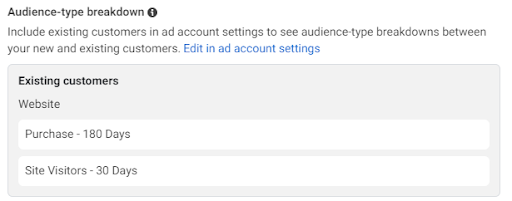
You can set up existing customers using a customer list of past purchasers and add website visitors in ASC.
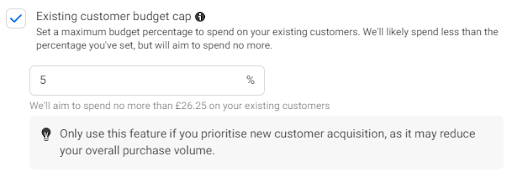
You can limit the budget going towards your existing customers to priortise new users instead.
There are also brand safety levers on placement targeting, similar to other in-platform campaigns, which are available to ASC too. These allow for some exclusions on the placements that underperform in order to improve efficiencies.
Reality: There is still a wealth of customisation options available to advertisers in ASC
As with any paid social activity, it often proves tricky to show value when focusing on GA performance. However, ASC has managed to win this argument despite the challenges faced with GA attribution.
We’ve seen this across multiple clients: ASC performs as strong, if not often stronger, than Dynamic Prospecting campaigns on both Meta and GA. It generates better ROAS results and lower CPAs. In some cases, we’ve even seen ASC outperform Dynamic Retargeting campaigns, as its new efficiencies allow it to go after both new and existing customers.
One such example comes from an eCommerce client of ours. ASC for that client has brought sessions at half the price, with lower CPAs by 39% and a GA ROAS 63% higher compared to the combined performance of Dynamic Prospecting and Retargeting campaigns.
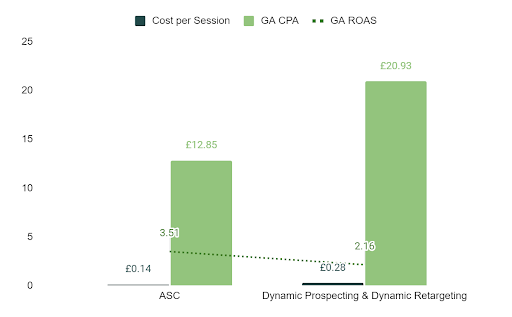
Reality: ASC’s performance in GA is a vast improvement on the Meta Dynamic campaigns.
When ASC started, purchase was the only conversion event you could use to optimise towards.
But the most recent update to this has added many other conversion event options, which means that lead generation advertisers can now take full advantage of this campaign type without having to go through smart conversion tracking implementation. This is very new and may not be yet available to all ad accounts.
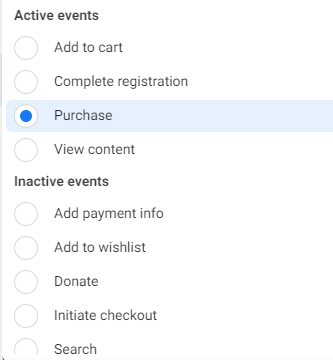
The most recent update to ASC has added many other conversion event options beyond just “Purchase”.
And just like other Meta campaigns, ASC lets you choose to optimise for maximum-value conversions rather than focusing on volume. This requires a good setup of feeding back the value of leads to Meta but has the potential of bringing in high-quality leads for lower costs.
Result: ASC is ideal for a broad range of advertisers beyond eCommerce.
It’s worth asking yourself some questions to determine whether ASC is a good option to test:
If you’ve answered yes to any of the above questions, then you should test ASC for yourself.
ASC is an exciting development in paid social advertising, but mastering the fundamentals of campaign planning can be tricky, whatever platform you’re using.
If you’re ready to level up your advertising on Meta or any other social platforms, we’re always ready to chat. Get in touch to talk about how we can help you grow your social ad revenues today.











